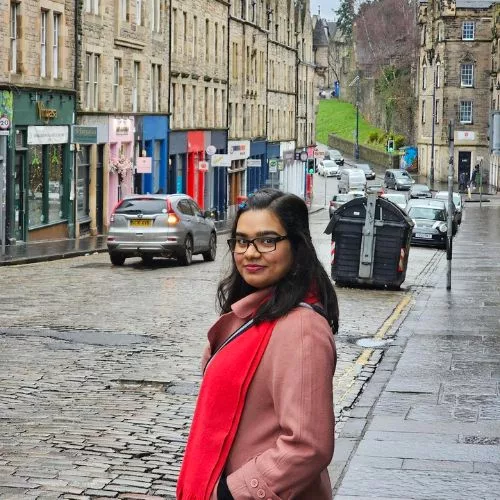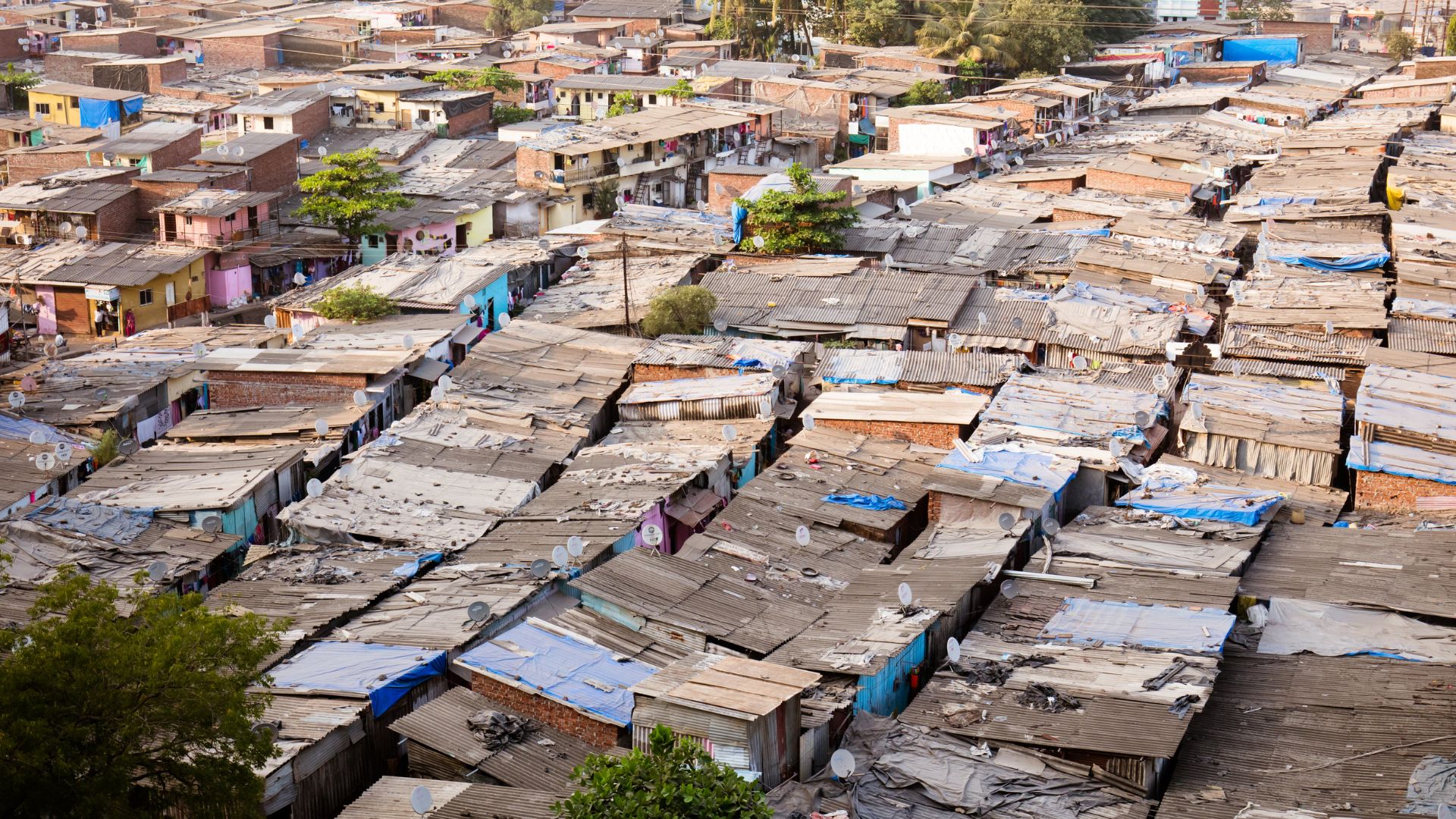Among 25% of the global urban population are residing in informal settlements, witnessing the future of fast urbanisation and population growth that are prone to migration, economic crises, poverty, gender-based violence and health threats. The slums are one of the most prevalent regions to constantly face such crimes and inequalities. Some of the biggest slums in the world are found in regions like Sub-Saharan Africa, Central Asia and Southern Asia. In 2018, the slum density of India ranked 57th out of 118 countries in the world and was included as home to one of the largest slums in Asia. According to the 2011 Census, about 65 million Indians, or roughly 17% of the country’s urban population, reside in slums. Among India’s most impoverished slums are Dharavi in Mumbai, Basanti in Kolkata, Bhalswa in Delhi and Nochikuppam in Chennai. Government programs are the driving forces to reach certain significant progress, with women’s active participation from the slum community, surprisingly contributing to overcoming vulnerability, building resistance against disease outbreaks, discrimination, social exclusion, and the looming threat of poverty.
This article aims to shed light on various socio-theoretical and practical viewpoints of slums, highlighting the vital role Indian women play in transforming impoverished slums into more resilient and sustainable communities.
The Reality of Slums: Challenging Marx’s Vision of a Classless Society
Slums are the practical evidence of people enduring socioeconomic disparities that Marxism aims to eradicate to guarantee a fair distribution of wealth and do away with class differences. Under a Marxist framework, the state regulates resources and production. It is important to look at slums as a critique, as they provide a potent indictment of modern Marxist society. Let’s examine the major perceptions of how the slums’ presence fails the Marxist ideals.
The Marxist vision of a classless, egalitarian society contrasts sharply with the acute poverty and marginalisation that the slums symbolise. The run-down housing, dearth of basic utilities and restricted access to healthcare and education in slums are manifestations of structural injustices that should be eliminated in a fully Marxist society. Moreover, slums are often the result of rapid industrialisation and urbanisation, processes that Marxism denounces as mistreating the proletariat. Even in societies that follow Marxist philosophy, slums are common, indicating that the mechanisms intended to end worker exploitation and offer acceptable living circumstances are either inadequately or ineffectively implemented. Hence, the problems with central planning and state control are demonstrated by the continued existence of slums in countries ruled by Marxist or socialist regimes. Further, the equitable allocation of resources is often undermined by bureaucratic inefficiencies, corruption and power concentration, resulting in socioeconomic imbalances evident in urban slums.
Why is the Need for Women’s Empowerment Growing in the Slums?
“My husband sold off all my jewellery to pay for his alcohol addiction. He also used up my savings for the children’s future. I had to leave him.”
Kamona (Story Published by habitat for humanity)
Like Kamona, hundreds of women in Indian slums often bear the brunt of the hardships, facing additional vulnerabilities due to their roles in managing households and caregiving. Despite these challenges, women are emerging as key agents of change within their communities. They feel that it is more important than ever to mitigate the effects of poverty, illiteracy, a growing shortage of safe drinking water and disease outbreaks (especially after COVID-19) in the slums. The need for better funding and technology is still lacking to improve the living conditions throughout India. However, the involvement of women in innovations and policies is trying to reach the community’s grassroots level and bring about genuine, long-lasting changes. Women contribute significantly to infrastructure construction and are an integral part of India’s urban neighbourhoods. With little to no training, women are frequently assigned to labour-intensive tasks and receive far lower pay than men. Organisations like India’s Karmika School of Construction Workers show that giving low-income women access to basic education provides them with useful skills and empowers them to demand respect, bargain for higher pay, innovate, and create better futures for themselves, their families, and their communities. Through organising and empowering low-income women in Community Action Groups, Mahila Housing Trust trains grassroots leaders known as “Vikasini” leaders to actively engage in, and influence city-level governance and policy decisions.
India has launched several programs focused on housing, such as Pradhan Mantri Awas Yojana (PMAY), Smart City Mission (covering redevelopment of rural and slum areas), Basic Services to the Urban Poor (BSUP), and Slum Redevelopment Scheme. Non-governmental organisations like SEWA and SPARC, alongside governmental bodies, work parallelly to increase public awareness about the slum economy and women’s rights. Workshops and training sessions organised by associations like WISCOMP teach men and women about gender equality and peaceful dispute resolution. Another essential step is empowerment via economic and educational opportunities – giving slum women access to education and career training makes them more financially independent and less vulnerable to violence. Women are further assisted in launching small enterprises through self-help organisations and microfinance programmes, promoting resilience.
The Challenge of Gender-Based Violence
Development is not limited to the economy or education but also holds a humongous resilience and realisation for slum-based women to prevent or protect themselves from gender violence. Studies found that between 15% and 59.3% of slum women in India have experienced violence. The primary risk factors include the husband’s alcohol dependence, the wife’s justification of the violence, the low educational attainment of both sexes, the age gap between the couple and the ending of a prior pregnancy. The review makes clear that women living in urban slums face ongoing violence. This highlights the urgent need to equip slum women with police awareness programmes to educate law enforcement professionals on how to respond to situations of gender violence with tact and promptness. These approaches aim to create a safe space that not only addresses pressing safety concerns but also provides women with the confidence to defend their rights and lead lives free from violence.
Female-led initiatives are crucial for slums to adapt to change. Undoubtedly, giving women in Indian slums the abilities, information, and confidence to enhance their living conditions is having a noticeable effect. However, more work needs to be done. It is possible and necessary to expand this effective model of empowering and organising women to seek better housing and amenities for their families and themselves.
SDGs 2030: End of the Tale!
A complex strategy involving inclusive planning, community involvement, policy reforms, and extensive social programs is needed to address the problems in slums. Several SDGs can be considered to improve conditions in India’s slums, either directly or indirectly. These include SDG 1: No Poverty, SDG 2: Zero Hunger, SDG 3: Good Health and Well-Being, SDGs 4 and 5: Quality Education and Gender Equality, along with goals for affordable and clean energy, clean water and sanitation, and decent work and economic growth. The effective transformation of impoverished areas into habitable urban spaces has the potential to significantly enhance the overall growth and well-being of Indian cities.
References
- Mahila Housing Trust (2020). Women Emerging as Leaders in Fixing India’s Slums. [online] Mahila Housing Trust. Available at: https://www.mahilahousingtrust.org/women-emerging-as-leaders-in-fixing-indias-slums/ [Accessed 10 Jun. 2024].
- Bhagat, P. (2019). Top five Major & largest Slums in India. [online] Best Line Producer and Fixer in India – New Delhi, Varanasi. Available at: https://www.filmingindo.com/blog-post/top-five-major-largest-slums-in-india/.
- John-Michael (n.d.). Empowering Young Women and Why It Matters – Generation. [online] www.generation.org. Available at: https://www.generation.org/news/empowering-young-women-and-why-it-matters/.
- Institute, G.D. (2018). How attempts to empower women can affect household dynamics. [online] Global Development Institute Blog. Available at: https://blog.gdi.manchester.ac.uk/how-attempts-to-empower-women-can-affect-household-dynamics/#:~:text=It%20is%20widely%20accepted%20that [Accessed 10 Jun. 2024].
- Mahila Housing Trust. (2020). Women Emerging as Leaders in Fixing India’s Slums. [online] Available at: https://www.mahilahousingtrust.org/women-emerging-as-leaders-in-fixing-indias-slums/ [Accessed 10 Jun. 2024].
- Yahoo News. (2016). Slumscapes: How the world’s five biggest slums are shaping their futures. [online] Available at: https://news.yahoo.com/slumscapes-worlds-five-biggest-slums-shaping-futures-145441163.html [Accessed 10 Jun. 2024].
- The Diplomat (n.d.). Women Emerging as Leaders in Fixing India’s Slums. [online] Available at: https://thediplomat.com/2020/01/women-emerging-as-leaders-in-fixing-indias-slums/.
- Habitat for Humanity GB. (2018). Gender Discrimination: Women’s Rights & Lives in Slums. [online] Available at: https://www.habitatforhumanity.org.uk/blog/2018/09/gender-discrimination-slums/.
Trisha Raha is a current student at the University of Stirling majoring MSc International Cooperation and Conflict (2023-2024). She is also an author, a published article writer, and a human rights volunteer with an emphasis on humanitarian studies, security politics, artificial intelligence, and gender.
- Trisha Rahahttps://asiascot.com/author/trisha-raha
- Trisha Rahahttps://asiascot.com/author/trisha-raha
- Trisha Rahahttps://asiascot.com/author/trisha-raha







